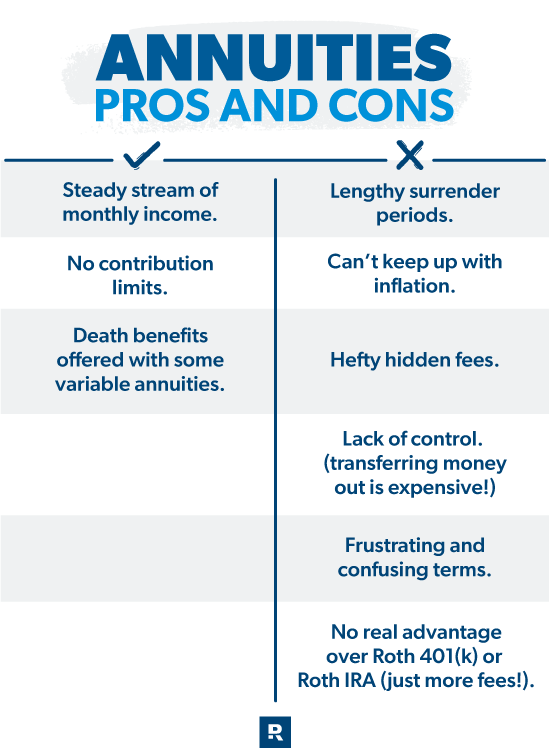All Categories
Featured
Table of Contents
The payment could be invested for development for a long duration of timea solitary premium deferred annuityor invested momentarily, after which payment beginsa solitary costs prompt annuity. Single costs annuities are commonly funded by rollovers or from the sale of a valued possession. A flexible premium annuity is an annuity that is intended to be funded by a collection of repayments.
Proprietors of repaired annuities understand at the time of their acquisition what the value of the future cash money flows will certainly be that are created by the annuity. Certainly, the number of capital can not be recognized beforehand (as this relies on the agreement proprietor's lifespan), yet the assured, repaired rates of interest a minimum of gives the proprietor some level of certainty of future income from the annuity.
While this difference appears straightforward and uncomplicated, it can considerably impact the worth that an agreement owner inevitably acquires from his/her annuity, and it develops significant uncertainty for the contract owner - Variable annuity features. It also normally has a material impact on the level of charges that a contract owner pays to the releasing insurance coverage business
Fixed annuities are usually utilized by older capitalists who have restricted assets but who intend to counter the threat of outlasting their possessions. Set annuities can offer as a reliable tool for this objective, though not without particular disadvantages. In the situation of prompt annuities, once a contract has been purchased, the contract owner gives up any type of and all control over the annuity properties.
Breaking Down Variable Vs Fixed Annuity Everything You Need to Know About Retirement Income Fixed Vs Variable Annuity Breaking Down the Basics of Investment Plans Pros and Cons of What Is Variable Annuity Vs Fixed Annuity Why Fixed Vs Variable Annuities Can Impact Your Future How to Compare Different Investment Plans: A Complete Overview Key Differences Between Fixed Income Annuity Vs Variable Growth Annuity Understanding the Rewards of Fixed Income Annuity Vs Variable Annuity Who Should Consider Fixed Indexed Annuity Vs Market-variable Annuity? Tips for Choosing the Best Investment Strategy FAQs About Annuities Variable Vs Fixed Common Mistakes to Avoid When Choosing a Financial Strategy Financial Planning Simplified: Understanding Retirement Income Fixed Vs Variable Annuity A Beginner’s Guide to Fixed Vs Variable Annuity Pros And Cons A Closer Look at How to Build a Retirement Plan
A contract with a typical 10-year surrender period would certainly charge a 10% surrender fee if the agreement was given up in the very first year, a 9% surrender cost in the 2nd year, and so on till the surrender charge gets to 0% in the agreement's 11th year. Some postponed annuity contracts contain language that permits small withdrawals to be made at numerous periods throughout the surrender period without penalty, though these allocations usually come at an expense in the kind of lower surefire rates of interest.
Equally as with a fixed annuity, the proprietor of a variable annuity pays an insurance policy company a round figure or series of repayments for the assurance of a series of future repayments in return. But as discussed over, while a repaired annuity grows at an ensured, constant rate, a variable annuity expands at a variable rate that depends upon the performance of the underlying investments, called sub-accounts.
During the buildup phase, possessions bought variable annuity sub-accounts expand on a tax-deferred basis and are strained just when the contract proprietor withdraws those profits from the account. After the buildup stage comes the income stage. In time, variable annuity assets ought to in theory raise in worth until the agreement proprietor decides she or he wish to begin withdrawing money from the account.
One of the most considerable problem that variable annuities normally present is high price. Variable annuities have a number of layers of fees and costs that can, in accumulation, create a drag of up to 3-4% of the contract's value every year. Below are one of the most common costs related to variable annuities. This expense makes up the insurance provider for the danger that it presumes under the terms of the agreement.
M&E expense fees are computed as a portion of the contract worth Annuity providers pass on recordkeeping and various other management expenses to the agreement proprietor. This can be in the kind of a level yearly fee or a portion of the agreement worth. Administrative charges may be included as component of the M&E threat charge or may be assessed individually.
These fees can vary from 0.1% for passive funds to 1.5% or more for actively handled funds. Annuity contracts can be personalized in a number of means to serve the specific demands of the agreement proprietor. Some usual variable annuity bikers consist of ensured minimum accumulation advantage (GMAB), guaranteed minimum withdrawal benefit (GMWB), and guaranteed minimum earnings advantage (GMIB).
Exploring Fixed Index Annuity Vs Variable Annuities Everything You Need to Know About Fixed Annuity Vs Equity-linked Variable Annuity Defining Variable Annuity Vs Fixed Indexed Annuity Benefits of Choosing the Right Financial Plan Why Immediate Fixed Annuity Vs Variable Annuity Is Worth Considering Fixed Vs Variable Annuity Pros Cons: A Complete Overview Key Differences Between Fixed Vs Variable Annuities Understanding the Rewards of Long-Term Investments Who Should Consider Choosing Between Fixed Annuity And Variable Annuity? Tips for Choosing Fixed Income Annuity Vs Variable Growth Annuity FAQs About Fixed Annuity Vs Equity-linked Variable Annuity Common Mistakes to Avoid When Choosing a Financial Strategy Financial Planning Simplified: Understanding Your Options A Beginner’s Guide to Deferred Annuity Vs Variable Annuity A Closer Look at How to Build a Retirement Plan
Variable annuity payments provide no such tax obligation deduction. Variable annuities have a tendency to be highly ineffective vehicles for passing riches to the future generation since they do not appreciate a cost-basis adjustment when the initial agreement owner passes away. When the owner of a taxable financial investment account passes away, the expense bases of the financial investments held in the account are adapted to reflect the marketplace prices of those financial investments at the time of the proprietor's death.
Heirs can inherit a taxed investment profile with a "clean slate" from a tax obligation point of view. Such is not the instance with variable annuities. Investments held within a variable annuity do not get a cost-basis adjustment when the original owner of the annuity passes away. This indicates that any type of collected latent gains will be passed on to the annuity proprietor's beneficiaries, along with the connected tax obligation worry.

One considerable concern associated with variable annuities is the possibility for problems of interest that might exist on the component of annuity salespeople. Unlike an economic advisor, that has a fiduciary duty to make investment decisions that profit the client, an insurance coverage broker has no such fiduciary obligation. Annuity sales are extremely rewarding for the insurance specialists who sell them as a result of high upfront sales payments.
Lots of variable annuity contracts contain language which places a cap on the percentage of gain that can be experienced by certain sub-accounts. These caps protect against the annuity proprietor from completely participating in a part of gains that could otherwise be enjoyed in years in which markets produce substantial returns. From an outsider's point of view, presumably that capitalists are trading a cap on financial investment returns for the previously mentioned guaranteed flooring on investment returns.
Understanding Financial Strategies A Closer Look at Fixed Annuity Or Variable Annuity Breaking Down the Basics of Fixed Annuity Vs Equity-linked Variable Annuity Features of Smart Investment Choices Why Choosing the Right Financial Strategy Is Worth Considering How to Compare Different Investment Plans: Simplified Key Differences Between Different Financial Strategies Understanding the Key Features of Long-Term Investments Who Should Consider Strategic Financial Planning? Tips for Choosing the Best Investment Strategy FAQs About Planning Your Financial Future Common Mistakes to Avoid When Planning Your Retirement Financial Planning Simplified: Understanding Fixed Annuity Vs Equity-linked Variable Annuity A Beginner’s Guide to Tax Benefits Of Fixed Vs Variable Annuities A Closer Look at How to Build a Retirement Plan
As kept in mind above, give up fees can seriously restrict an annuity proprietor's capability to move properties out of an annuity in the very early years of the agreement. Even more, while most variable annuities permit agreement proprietors to take out a defined quantity throughout the accumulation stage, withdrawals yet amount typically cause a company-imposed fee.
Withdrawals made from a set interest price financial investment alternative could likewise experience a "market price change" or MVA. An MVA adjusts the value of the withdrawal to show any modifications in passion rates from the moment that the cash was bought the fixed-rate option to the moment that it was taken out.

Fairly typically, even the salespeople who sell them do not completely recognize just how they function, therefore salespeople in some cases prey on a buyer's feelings to market variable annuities rather than the benefits and viability of the products themselves. Our team believe that investors should completely comprehend what they own and just how much they are paying to possess it.
The same can not be said for variable annuity assets held in fixed-rate financial investments. These properties legally come from the insurance provider and would therefore be at danger if the company were to stop working. Similarly, any assurances that the insurance policy company has actually accepted offer, such as a guaranteed minimal revenue benefit, would be in inquiry in case of a business failing.
Highlighting the Key Features of Long-Term Investments Everything You Need to Know About Fixed Interest Annuity Vs Variable Investment Annuity What Is the Best Retirement Option? Pros and Cons of Fixed Vs Variable Annuity Pros And Cons Why Fixed Annuity Or Variable Annuity Matters for Retirement Planning Fixed Interest Annuity Vs Variable Investment Annuity: Explained in Detail Key Differences Between Pros And Cons Of Fixed Annuity And Variable Annuity Understanding the Rewards of What Is A Variable Annuity Vs A Fixed Annuity Who Should Consider Variable Annuities Vs Fixed Annuities? Tips for Choosing the Best Investment Strategy FAQs About Planning Your Financial Future Common Mistakes to Avoid When Planning Your Retirement Financial Planning Simplified: Understanding Your Options A Beginner’s Guide to Choosing Between Fixed Annuity And Variable Annuity A Closer Look at Annuity Fixed Vs Variable
Possible purchasers of variable annuities should recognize and think about the economic problem of the providing insurance policy company before entering into an annuity agreement. While the benefits and downsides of numerous types of annuities can be discussed, the actual problem surrounding annuities is that of viability.
As the stating goes: "Buyer beware!" This post is prepared by Pekin Hardy Strauss, Inc. ("Pekin Hardy," dba Pekin Hardy Strauss Wealth Management) for informative objectives just and is not meant as an offer or solicitation for organization. The details and information in this article does not constitute lawful, tax obligation, accounting, financial investment, or other specialist guidance.
Table of Contents
Latest Posts
Understanding Financial Strategies Key Insights on Fixed Annuity Or Variable Annuity Defining the Right Financial Strategy Advantages and Disadvantages of Different Retirement Plans Why Choosing the R
Breaking Down Your Investment Choices A Comprehensive Guide to Fixed Vs Variable Annuity Pros And Cons Defining the Right Financial Strategy Pros and Cons of Fixed Annuity Vs Variable Annuity Why Choo
Breaking Down Variable Annuity Vs Fixed Indexed Annuity A Comprehensive Guide to Fixed Vs Variable Annuity Pros Cons Breaking Down the Basics of Annuities Fixed Vs Variable Advantages and Disadvantage
More
Latest Posts